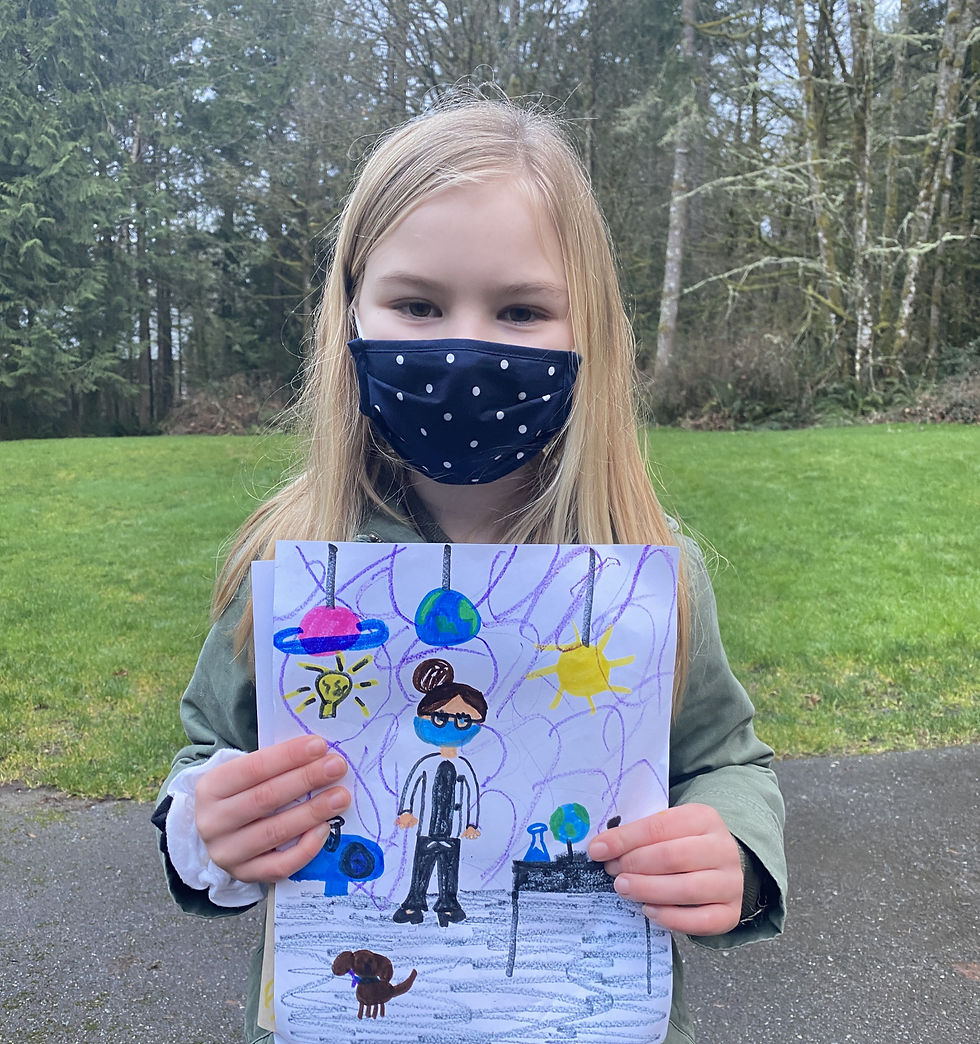Science and Me
- cindyinthewild
- Apr 13, 2021
- 4 min read
Updated: Apr 15, 2021

For a long time, I did not consider myself a “science person”.
While science classes in elementary school helped nurture my love for the natural environment and inspired my dream of one day working with plants and animals, this did not last very long. At some point, the wonder and magic I felt about the natural world began to fade as I realized that maybe science was not for me. I was taught that science looked a certain way and that other people were more fit to be scientists. It was not until my endeavors into art making, a work trip to Vietnam, and my decision to become an educator that my relationship with science began to change.
Although science classes like physics and chemistry were not fun for me, I was very enthusiastic about environmental science because it connected to my passion for the natural world. In my first year of college, I took a class that examined the intersections of art and science. This class was influential in showing me how art, an area where I felt strong in, overlapped with science. I saw that art, like science, was a practice where I made observations in my world and attempted to describe it. I reflected on how my first sketchbooks as a kid were filled with drawings of nature, animals, patterns, and landscapes. The environment is what inspired me to make art in the first place, so perhaps the more I learned about environmental science, the more I would be inspired to make art. These reflections eventually led me to declare my double major in Studio Art and enroll in classes like “Oceans and Global Change” and “Art & Environment: Coral Reefs”.

Poly Ethylene sculpture on Rice University campus
As I reached senior year where I could dedicate more time for art making, I began to notice how environmental issues emerged as a recurring topic in my paintings, collages, and sculptures. My art often revolved around the impact of climate change, the stories of endangered species, and plastic pollution in our oceans. I saw art as my gateway into science and activism, which compelled me to communicate my environmentalism through my creations. One of these creations was a collaboration with a fellow art major where we made a plastic, human-like sculpture named Poly Ethylene. Our goal was to prompt more students to consider how much plastic they use in their daily lives in an eye-catching way, so we placed Poly in a public area where we could see how students and professors reacted to her when they passed by. It was the first time I felt that my skills in art and my passion for environmental science really aligned.
My academic experience led me to pursue projects and internships in environmental education, the foundation for my career after college. At that time, I was still insecure about not having a degree in science, which I felt was a disadvantage considering that I wanted to work in a conservation field. Thankfully, my first job out of college came through the Roger Arliner Young Conservation Fellowship. The purpose of this fellowship was to increase pathways for young people of color to pursue careers in the environment. Not only did I gain an immensely supportive affinity group of women of color who had similar struggles in how we navigated our jobs, I also learned how my strengths in writing, public speaking, storytelling, and research were all valuable skills in communicating science.

RAY Fellows and Ocean Conservancy colleagues with guest Dr. Ayana Elizabeth Johnson
This fellowship also led me to go on a field research trip to Vietnam to study how plastic debris affects the Red River Delta and surrounding farmers living in that region. My tasks were to assist the scientists on our team and serve as a language interpreter with the Vietnamese nonprofit we partnered with. At first I was apprehensive about how much I could contribute to this project. However, I began to think that field science was not as intimidating as I previously thought. I found the whole process really fascinating, like a series of puzzles to get to the problem and figure out solutions. In addition to analytical skills, the work also required perseverance, curiosity, and creativity. The opportunity to observe how Vietnamese people engage and discuss the scientific process, the research, and why this research was important was the most rewarding. I had the chance to see how my Vietnamese colleagues convey our team’s findings to the local community which was incredibly insightful for me, confirming my interest in science education. This trip solidified for me the importance of diversity in conservation and how impactful it is to see people who look like you engage in science.

Collecting samples for field research trip in Nam Dinh, Vietnam
My decision to study environmental education involved my desire to learn how to better communicate about the environment and train myself in science education that is inclusive and accessible. So far at IslandWood, I am beginning to consciously shape my identity as a science educator. Learning about different sciences such as Traditional Ecological Knowledge as well as Indigenous narratives about the environment through the work of Robin Kimmerer and Dr. Megan Bang have been the most exciting for me. As I continue to learn and unlearn dominant narratives around science, I realize that from the beginning I was deeply interested in learning about the world and how living things work together to create the world we see. I see that there are many ways of doing science that I can encourage in my teaching for my students. I hope to demonstrate how science can be for everyone. In this way, I am reclaiming what science means to me and what I can do as an educator to create positive science identities for the youth I work with.





Comments